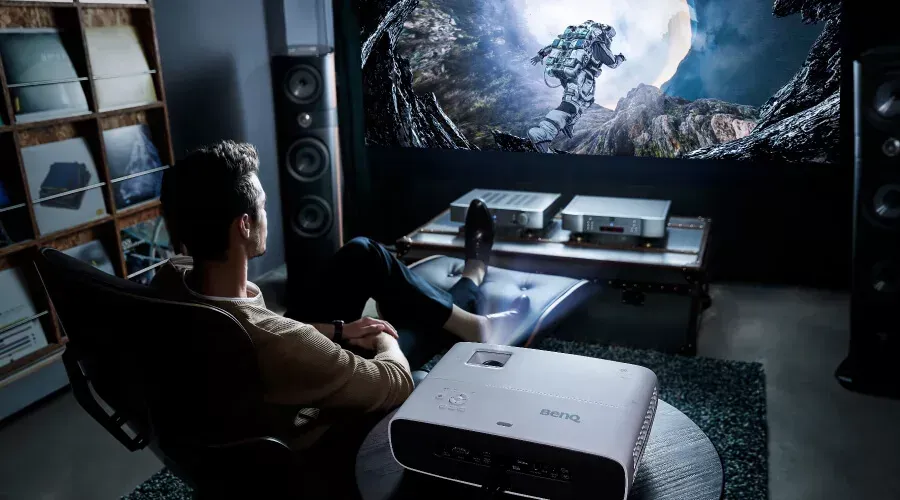Table of Contents:
Introduction:
Projectors are versatile devices that can transform your viewing experience. Whether you need one for business presentations, educational purposes, or home entertainment, this guide will provide you with all the information you need to make an informed decision.
Understanding Projector Functionality:
Projectors work by projecting images onto a screen or surface. They utilize light sources and lenses to display the content from various input devices, such as computers, DVD players, or streaming devices. This section will delve into the technical aspects of how projectors function and the key components involved.
1. Light Source
A projector's light source plays a crucial role in determining the image quality and overall performance. Common light sources include traditional lamps, LED bulbs, and laser diodes.
2. Optics and Lenses
The quality of lenses and optics directly impacts the clarity, brightness, and focus of the projected image. Different lens types, such as fixed or zoom lenses, offer flexibility in terms of projection distance and image size.
3. Display Technology
Projectors employ various display technologies, including LCD, DLP, and LCoS, each with its advantages and disadvantages. Understanding these technologies will help you choose the most suitable projector for your needs.
Types of Projectors:
Projectors come in different types to cater to diverse requirements. This section will explore the most common types:
1. Home Theater Projectors
Home theater projectors are designed to provide an immersive cinematic experience in the comfort of your own home. They offer high-resolution, vibrant colors, and wide aspect ratios for a true movie theater feel.
2. Business and Presentation Projectors
Business projectors are optimized for presentations, meetings, and conferences. They often include features like wireless connectivity, high brightness, and easy setup options to enhance productivity in professional settings.
3. Portable Projectors
Portable projectors are compact and lightweight, making them ideal for on-the-go use. They are convenient for business travelers, educators, and individuals who require a versatile projection solution.
Choosing the Right Projector:
With a wide range of projectors available on the market, selecting the right one can be overwhelming. Here are some factors to consider when choosing a projector:
1. Lumens and Brightness
The brightness level, measured in lumens, determines how well the projector performs in various lighting conditions. Consider the ambient light in your projection area and choose an appropriate brightness level.
2. Resolution
The resolution determines the level of detail and sharpness in the projected image. Higher resolutions, such as Full HD or 4K, offer better clarity, especially for larger screens.
3. Connectivity and Compatibility
Ensure that the projector has the necessary input ports and compatibility with your devices, such as HDMI, VGA, or wireless connectivity options.
Setting Up Your Projector:
Proper setup is crucial to ensure optimal performance and longevity of your projector. Follow these steps to set up your projector:
- Choose a suitable projection surface or screen.
- Position the projector at the right distance and angle for your desired screen size.
- Connect the projector to your input device using the appropriate cables.
- Adjust the focus, keystone correction, and other image settings for the best picture quality.
Projector Maintenance Tips:
Maintaining your projector properly can extend its lifespan and ensure consistent performance. Consider the following maintenance tips:
- Clean the projector's air filters regularly to prevent dust accumulation.
- Keep the projector's surroundings free from obstructions and ensure proper ventilation.
- Handle the projector and its components with care to avoid damage.
Common Projector Issues and Solutions:
Despite their reliability, projectors can encounter some common issues. Here are a few problems you might face and their possible solutions:
1. Poor Image Quality or Flickering
This issue can arise due to incorrect settings, faulty cables, or outdated firmware. Check your connections, adjust image settings, and update the firmware if available.
2. Overheating or Excessive Fan Noise
Overheating can occur if the projector is not adequately ventilated or if the air filters are clogged. Ensure proper airflow and clean the filters regularly to prevent overheating.
Conclusion:
Projectors are powerful devices that can enhance your viewing experience, whether for work or entertainment. By understanding their functionality, exploring the different types available, and considering key factors during the selection process, you can find the perfect projector for your needs. Remember to follow proper setup procedures and maintenance guidelines to maximize the longevity and performance of your projector.
Frequently Asked Questions:
Q: What is the optimal projection distance for a projector?
A: The optimal projection distance depends on the projector's throw ratio and the desired screen size. Refer to the manufacturer's specifications or use an online projection calculator for accurate results.
Q: Can I connect a projector to my smartphone or tablet?
A: Yes, many projectors offer wireless or wired connectivity options for smartphones and tablets. Check the projector's compatibility and available connection methods.
Q: How do I clean the projector's lens?
A: To clean the lens, use a microfiber cloth or lens cleaning solution specifically designed for optical surfaces. Gently wipe the lens in a circular motion, being careful not to apply excessive pressure.

